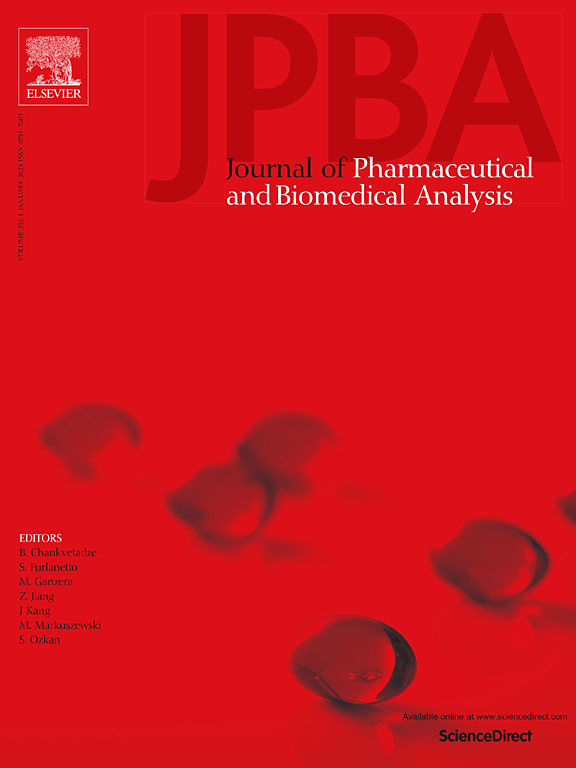Exploring the mechanisms of Yinchenhao decoction against ANIT-induced cholestatic liver injury by lipidomics, metabolomics and network pharmacology
IF 3.1
3区 医学
Q2 CHEMISTRY, ANALYTICAL
Journal of pharmaceutical and biomedical analysis
Pub Date : 2025-02-04
DOI:10.1016/j.jpba.2025.116736
引用次数: 0
Abstract
Yinchenhao decoction (YCHD) has been used for the treatment of cholestasis for more than 1000 years with clear clinical efficacy. However, its active compounds and pharmacological mechanism against cholestasis are unclear. In this study, an integrated strategy of network pharmacology, lipidomics, metabolomics, and molecular docking were performed to elucidate the mechanism of YCHD’s anti-cholestasis effect. Network pharmacology demonstrated YCHD mainly modulated lipid and atherosclerosis signaling pathways with the involvement of NF-κB, TNF, MAPK, and PI3K/AKT signaling pathways. In vivo experiments, male C57BL/6 J mice model of cholestasis was established by alpha-naphthyl isothiocyanate (ANIT), and were treated with different dosages (3 g/kg and 9 g/kg) of YCHD for one week. Ursodeoxycholic acid (UDCA) was used as a positive control. The in vivo experiments verified the ameliorative effect of YCHD on inflammation, hepatocellular injury and cholestasis. Furthermore, lipidomics and metabolomics research showed that YCHD could improve the metabolism disorder of glycerolipid, glycerophospholipid and amino acids. Subsequently, further WB and molecular docking validation experiments showed that the active compounds in YCHD have regulatory effects on the PPARγ/NF-κB/JNK pathway, the core pathway in lipid and atherosclerosis pathways, thereby inhibiting inflammatory response and improving lipid metabolism disorders. This study could provide evidence of the molecular mechanism and material basis of YCHD in treating cholestasis. This study also provided new research ideas for the discovery of active ingredients in traditional Chinese medicine formulas for the treatment of cholestasis.
求助全文
约1分钟内获得全文
求助全文
来源期刊
CiteScore
6.70
自引率
5.90%
发文量
588
审稿时长
37 days
期刊介绍:
This journal is an international medium directed towards the needs of academic, clinical, government and industrial analysis by publishing original research reports and critical reviews on pharmaceutical and biomedical analysis. It covers the interdisciplinary aspects of analysis in the pharmaceutical, biomedical and clinical sciences, including developments in analytical methodology, instrumentation, computation and interpretation. Submissions on novel applications focusing on drug purity and stability studies, pharmacokinetics, therapeutic monitoring, metabolic profiling; drug-related aspects of analytical biochemistry and forensic toxicology; quality assurance in the pharmaceutical industry are also welcome.
Studies from areas of well established and poorly selective methods, such as UV-VIS spectrophotometry (including derivative and multi-wavelength measurements), basic electroanalytical (potentiometric, polarographic and voltammetric) methods, fluorimetry, flow-injection analysis, etc. are accepted for publication in exceptional cases only, if a unique and substantial advantage over presently known systems is demonstrated. The same applies to the assay of simple drug formulations by any kind of methods and the determination of drugs in biological samples based merely on spiked samples. Drug purity/stability studies should contain information on the structure elucidation of the impurities/degradants.

 求助内容:
求助内容: 应助结果提醒方式:
应助结果提醒方式:


